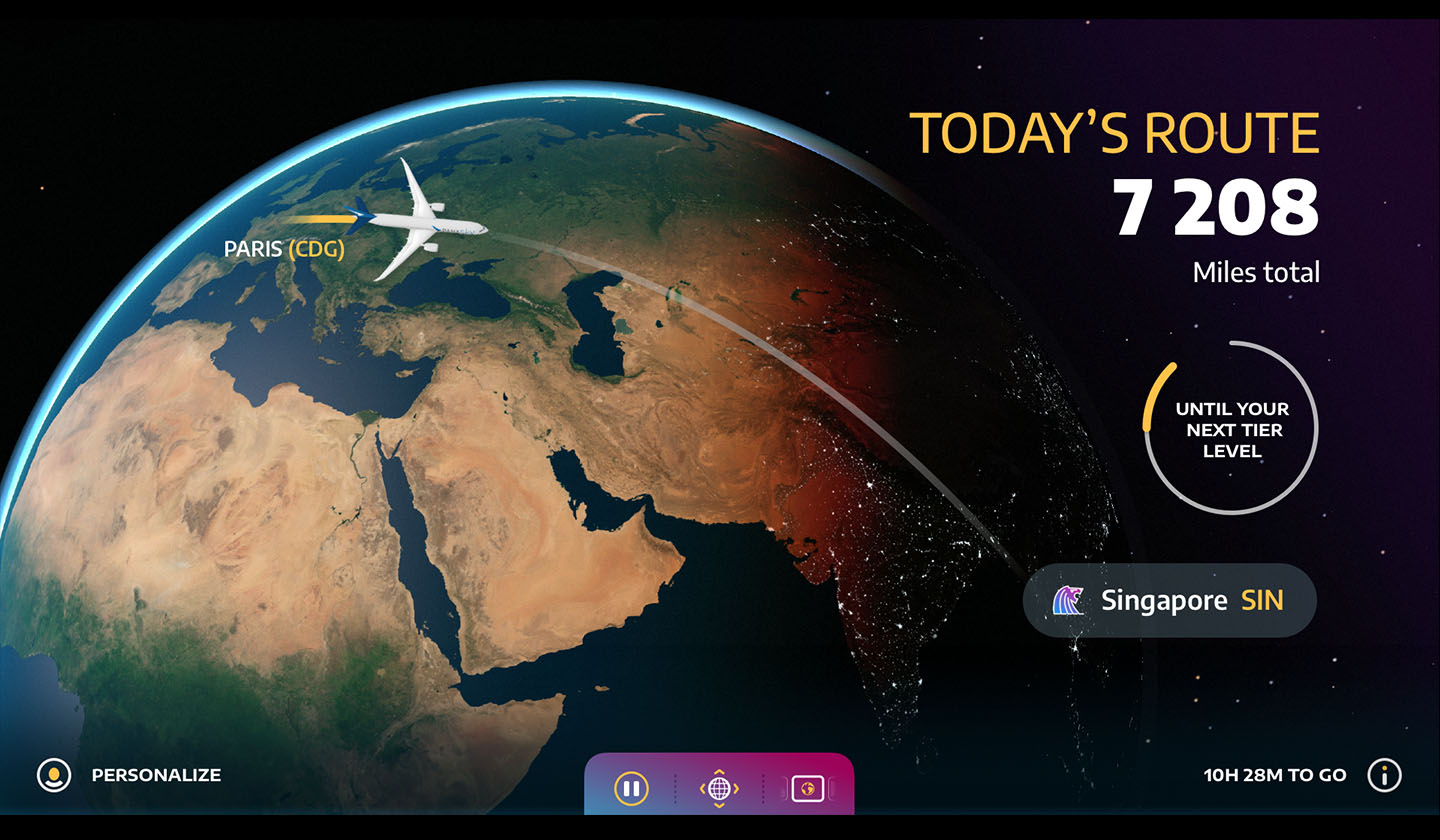Light comedies and animated fare might be the hottest film genres inflight, but when it comes to calming, mass-appeal inflight entertainment (IFE), nothing seems to soothe the soul and capture the imaginations of passengers on an airplane quite like a moving map.
That's just one reason why Panasonic created ArcTM, a 3D inflight map platform that brings inflight maps to the next level—for both the passenger and the airline. Passengers can use personalization features and explore destination map content. Airlines can take advantage of Arc's connection to NEXT Marketplace and develop new revenue streams.
Why we made a better inflight map
At its core, Arc is a product of genuine love for maps.
Appealing to our age-old fascination with charting and documenting our adventures in the world—in lands both real and imagined—maps are one of the most universal forms of communication on Earth. Whether they're programmed into our seatback IFE systems, beamed onto our devices, or scribbled on the back of a napkin, the romance and allure of maps is impossible to resist.
The first maps are thought to have been drafted on clay tablets by the Babylonians. They were local maps drawn to describe parts of tribes' local geographies. Increasingly detailed world maps came later, during the Age of Discovery when European explorers set sail for far-off lands in search of gold, silver, and spices.
Today, maps aren't just for wayfinding; they tell a story of where we've been, where we're going, and the untold treasures that await us there. You don't have to be Indiana Jones or a ring-toting hobbit trekking across a meticulously mapped-out Middle Earth to appreciate the inherent meaning of these images.

The Next Generation of Inflight Maps
Before IFE, airline route maps were done the old-fashioned way: On paper. In commercial aviation's earliest days, colorful, beautifully illustrated posters promised passengers adventures in exotic locales.
In-cabin digital moving maps first wowed passengers in 1982. Since then, they've changed slightly with the times. Still, the concept of the moving map hasn't made the same kinds of leaps that other in-cabin technologies have.
Airshow's IFE system, also named Airshow, displays were, as Nick Couldry and Anna McCarthy write in the book MediaSpace: Place, Scale and Culture in a Media Age, "an abstract representation of the space of airline travel, illustrating the adjustments of the plane (represented by an oversized icon) over a geographic map punctuated by altitude, temperature, speed, and flight time indicators."
Panasonic's Arc emerged from the realization that maps—still one of the most popular features on modern IFEC systems—could be used for so much more than reporting flight status. “We re-imagined the map experience based on its full potential, and integrated it as a core service of our NEXT and X Series IFEC systems," says Gaston Sandoval, Panasonic Avionics' Vice President of Product Line Management, Global Head of Marketing.
"We re-imagined the map experience based on its full potential, and integrated it as a core service of our NEXT and X Series IFEC systems"
-Gaston Sandoval
VP of Product Management and Marketing
What's Next?
The Google Maps era has intensified our fascination with and dependence on modern cartography. At the same time, free moving maps and flight-tracker sites like FlightAware and Flightradar24 have driven consumer demand for cooler moving map products related to air travel.
Passengers are keener than ever to integrate the maps on their devices with their IFEC counterparts. That means a lot of unexplored opportunities for forward-thinking providers and airlines to take the moving map experience to the next level—especially in an era of augmented reality and hyper-personalized travel experiences.
Whether airline passengers use IFE maps to track the aircraft, to provide some visual "white noise" while trying to fall asleep, or to imagine their future adventures, the result is the same: They love maps. We can't wait to show them what comes next.



